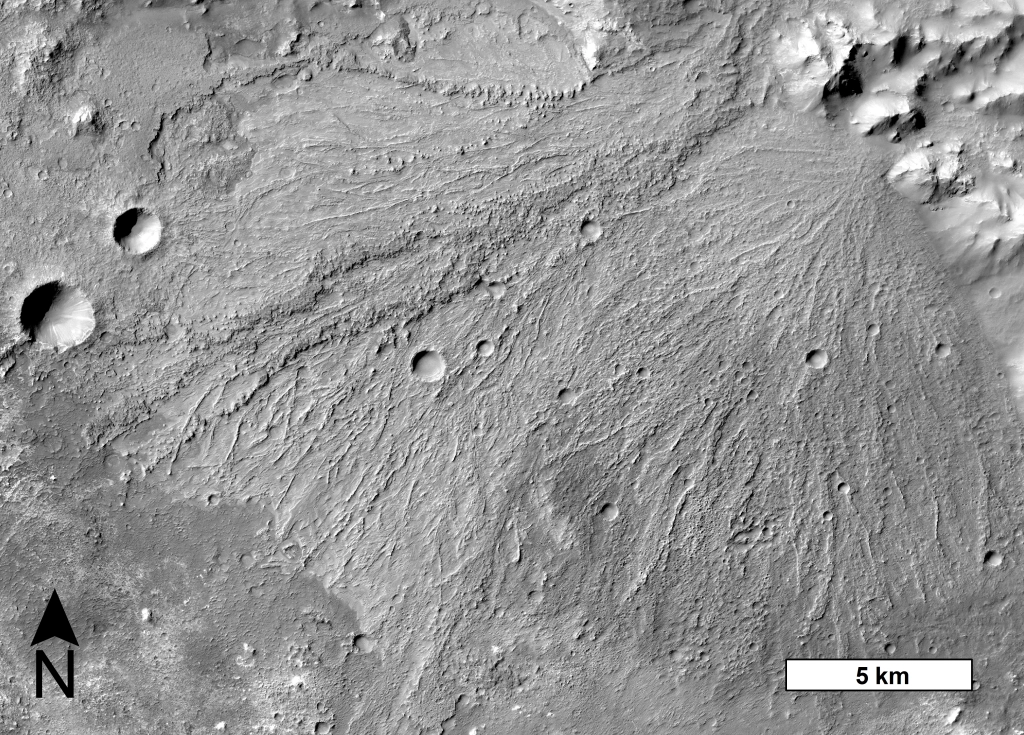Post contributed by Dr Alex Morgan, Planetary Science Institute, USA
Alluvial fans are sedimentary deposits that form at the base of mountain fronts as a channel exits a steep, confined valley onto more gently sloped and unconfined terrain (Image 1). The channel loses its ability to transport sediment due to the reduction in slope and the lateral expansion of flow, and over time sediment is deposited into a semi-conical shape. The effects of water on a landscape are the most unambiguous markers of past climatic environment, and the distribution of alluvial fans provides a record of where and when liquid water was capable of transporting sediment on Mars in the past. Furthermore, as depositional features in close proximity with their sediment sources, alluvial fans preserve a record of environmental changes that occurred while sediment was being transported and deposited. In this study, we leveraged high resolution images from the CTX camera on Mars Reconnaissance Orbiter, which cover the entire surface of Mars, to conduct a global survey for fan-shaped sedimentary landforms across the martian surface and explore their implications for environmental change.

Image 1: A large alluvial fan in Harris crater, centered on 21.5°S, 67°E. The down-fan-trending ridges are interpreted to be paleochannels now in inverted relief due to preferential erosion of finer overbank deposits. This particular fan exhibits evidence for multiple episodes of sedimentation (Williams et al., 2011). CTX image G02_019160_1580_XN_22S292W.
(more…)






